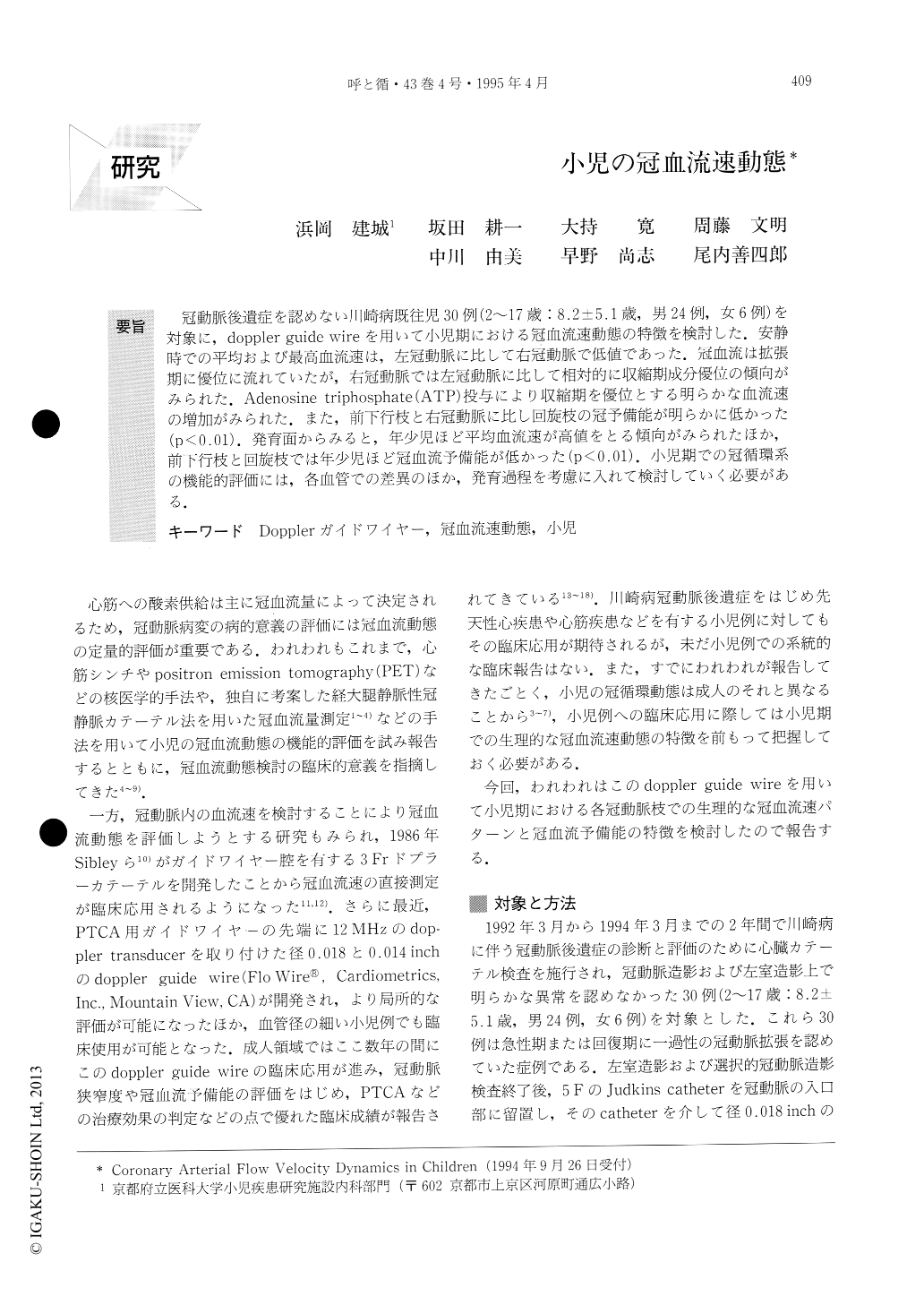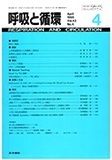Japanese
English
- 有料閲覧
- Abstract 文献概要
- 1ページ目 Look Inside
冠動脈後遺症を認めない川崎病既往児30例(2〜17歳:8.2±5.1歳,男24例,女6例)を対象に,doppler guide wireを用いて小児期における冠血流速動態の特徴を検討した.安静時での平均および最高血流速は,左冠動脈に比して右冠動脈で低値であった.冠血流は拡張期に優位に流れていたが,右冠動脈では左冠動脈に比して相対的に収縮期成分優位の傾向がみられた.Adenosine triphosphate(ATP)投与により収縮期を優位とする明らかな血流速の増加がみられた.また,前下行枝と右冠動脈に比し回旋枝の冠予備能が明らかに低かった(p<0.01).発育面からみると,年少児ほど平均血流速が高値をとる傾向がみられたほか,前下行枝と回旋枝では年少児ほど冠血流予備能が低かった(p<0.01).小児期での冠循環系の機能的評価には,各血管での差異のほか,発育過程を考慮に入れて検討していく必要がある.
To assess the characteristics of coronary artery flow velocity dynamics in children, we examined the phasic coronary flow velocity patterns at rest and peak hyperemic responses to intracoronary adenosine triphosphate (ATP) using a 0.018" doppler guide wire (Flo Wire®) in 30 Kawasaki disease patients with angiographically normal coronary arteries. Coronary flow reserve (CFR) was calculated as the ratio of ATP-induced hyperemic to baseline average peak velocity (APV). Flow velocity parameters (APV & maximum peak velocity) in the right coronary artery (RCA) were lower in value than those in the left anterior descending artery (LAD) and left circumflex artery (LCX). All three vessels showed a diastolic dominant flow pattern in each segment. This flow pattern was less marked in RCA. All three vessels showed a significant increase in APV and a significant decrease in peak diastolic to-peak systolic velocity ratio (DSVR) after ATP administration. CFR was significantly lower in LCX as compared with LAD and RCA (p<0.01 : 1.93 ±0.34 in LCX vs 2.32±0.42 in LAD and 2.37±0.44 in RCA). From the view points of aging, it was revealed that APVs in three vessels at rest were mildly higher in the younger age-group than in the elder, although there was statistically no significant difference between two age-groups. CFRs in LAD and LCX were significantly lower in the younger age-group than in the elder (p<0.01 in both vessels : 2.01±0.28 in the younger vs 2.53±0.37 0.37 in the elder in LAD, and 1.61± 0.15 in the younger vs 2.06 -0.31 in the elder in LCX).
This study using an intracoronary doppler guide wire demonstrated that there were some characteristic findings in coronary flow velocity dynamics in childhood. These physiological characteristics in coronary flow velocity dynamics must be taken into consideration at the study of the coronary circulation in children.

Copyright © 1995, Igaku-Shoin Ltd. All rights reserved.


